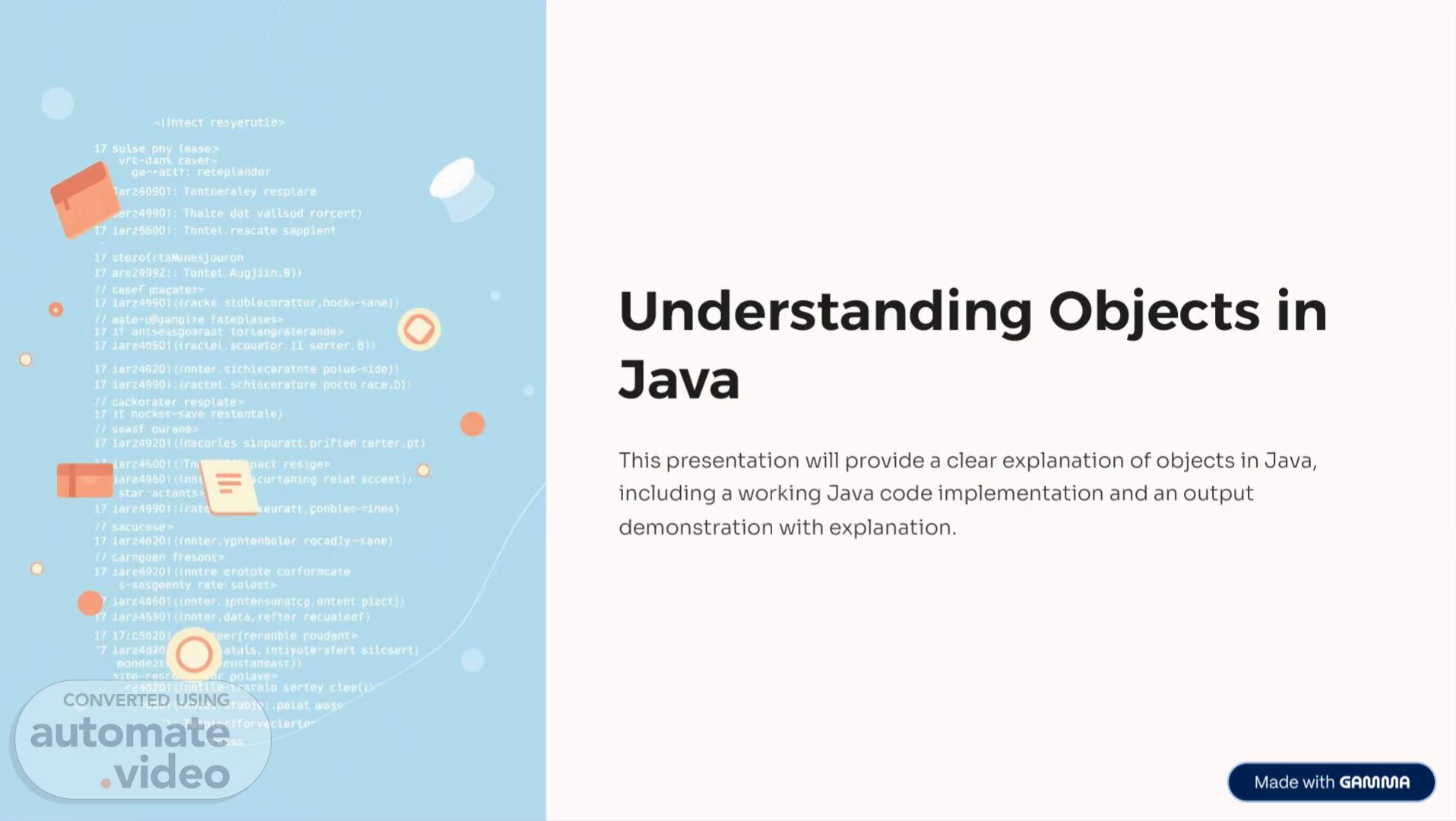Scene 1 (0s)
[Audio] Understanding Objects in Java This presentation will provide a clear explanation of objects in Java, including a working Java code implementation and an output demonstration with explanation..
Scene 2 (13s)
[Audio] What is an Object? In Java, an object is a fundamental concept of Object-Oriented Programming (OOP). It is a real-world entity that has state and behavior. State: Represents the data or properties of an object. For example, a "Car" object might have a state like "color" (red), "make" (Toyota), and "model" (Camry). Behavior: Represents the actions an object can perform. For a "Car" object, behaviors could include "startEngine()", "accelerate()", or "brake()"..
Scene 3 (50s)
[Audio] Classes as Blueprints Objects are instances of classes. A class is a blueprint or a template from which objects are created. It defines the structure and behavior that all objects of that class will have. Class Definition Object Creation Defines the attributes (state) and methods (behavior) that When you create an object from a class, you are objects of that class will possess. instantiating the class..
Scene 4 (1m 25s)
[Audio] Key Characteristics of Objects Identity Encapsulation Modularity Each object has a unique identity, Objects bundle data (state) and Objects promote modularity by allowing it to be distinguished from methods (behavior) that operate allowing complex systems to be other objects, even if they have the on the data into a single unit. This broken down into smaller, same state. hides the internal implementation manageable, and independent details from the outside world. units..
Scene 5 (2m 5s)
[Audio] Working Java Code Implementation Let's look at a simple Java code example to illustrate objects. // Define a class named 'Dog' class Dog // Method (behavior) public void bark() public void displayInfo() } public class ObjectExample }.
Scene 6 (2m 36s)
[Audio] Output Demonstration When the Java code from the previous slide is executed, the following output will be produced: Name: Buddy, Breed: Golden Retriever Buddy barks! Name: Lucy, Breed: Labrador Lucy barks!.
Scene 7 (2m 53s)
[Audio] Output Explanation 1 Object Creation 2 Accessing State 3 Invoking Behavior myDog and yourDog are two The displayInfo() method is called The bark() method is called on distinct objects created from the on each object to print their each object, showing that each respective names and breeds, object can perform its defined Dog class. Each has its own demonstrating that each object actions independently. unique state (name and breed). holds its own data. This demonstrates how objects encapsulate both data and behavior, making them powerful building blocks in Java programming..
